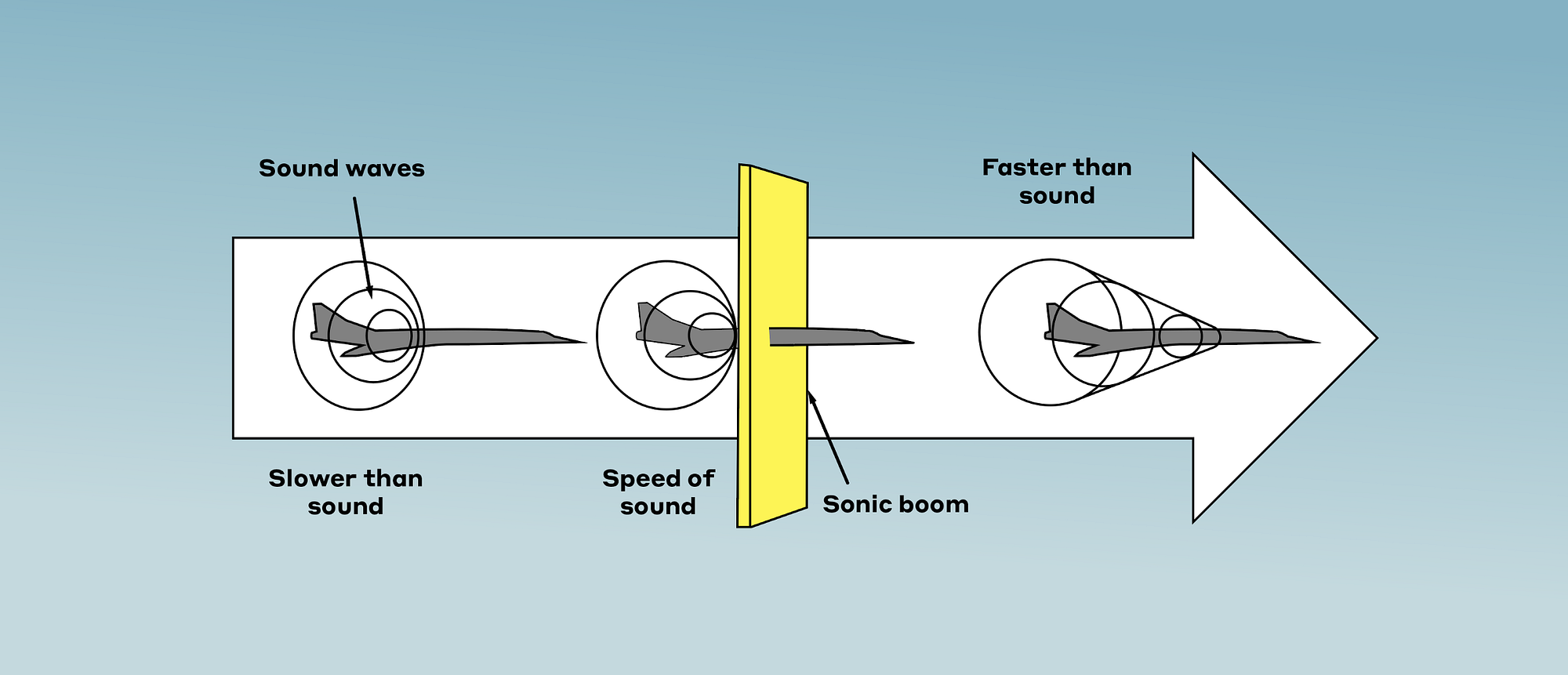The Speed of Sound Explained
Sound is caused by vibrations that travel in the form of waves (i.e. sound waves). Temperature and air density influence the speed of sound waves, but they move at 1125 fps assuming an average temperature of 68° fahrenheit. This works out to 761 mph at sea level. Keep in mind that the speed of sound becomes slower at higher altitudes due to air molecules moving at a slower rate as temperatures lower. Essentially, the speed of sound becomes faster the higher the temperature goes.
Bullets have the ability to travel up to twice the speed of sound. Their speed is influenced by multiple factors including the size of the gun and bullet type. The speed of a standard bullet can be broken down into three categories:
- Subsonic – Slower than the speed of sound (under 900 fps at sea level)
- Transonic – Approaching the speed of sound (900-1100 fps at sea level)
- Supersonic – Traveling faster than the speed of sound (1100 fps + at sea level)
When an object such as the aircraft visualized below moves faster than the speed of sound (i.e. supersonic) and thus breaks the sound barrier, those waves spread rapidly to create an elongated cone of shock waves that trail behind the object. This wave triggers a sonic boom which is the explosive sound heard as the object passes through the barrier. Bullets moving at supersonic speeds trigger particularly jarring sounds because of the sonic boom they cause.

Source: Boom Supersonic
Guns, Planes, and More
While guns have been breaking the sound barrier for ages, the world learned people could break it too on October 14, 1947 when pilot Chuck Yeager broke the sound barrier in his aircraft lovingly named “Glamorous Glennis.” Breaking the sound barrier does not cause harm to the object or person passing through it despite the powerful sound. Between aircrafts and guns, this is a regular phenomenon. In fact, the sound barrier has been broken using surprising objects like ping pong balls!
Exceptional Accuracy
Our Acoustic Threat Detection (ATD) technology monitors the acoustic signatures of the sound waves in the environment where it is utilized. The ballistic sound wave formed when the sound barrier is broken by a bullet in motion is what distinguishes gunshots from other sounds. ATD recognizes this ballistic soundwave and can identify bullets moving at subsonic, transonic, and supersonic speeds.








